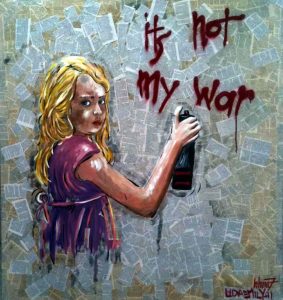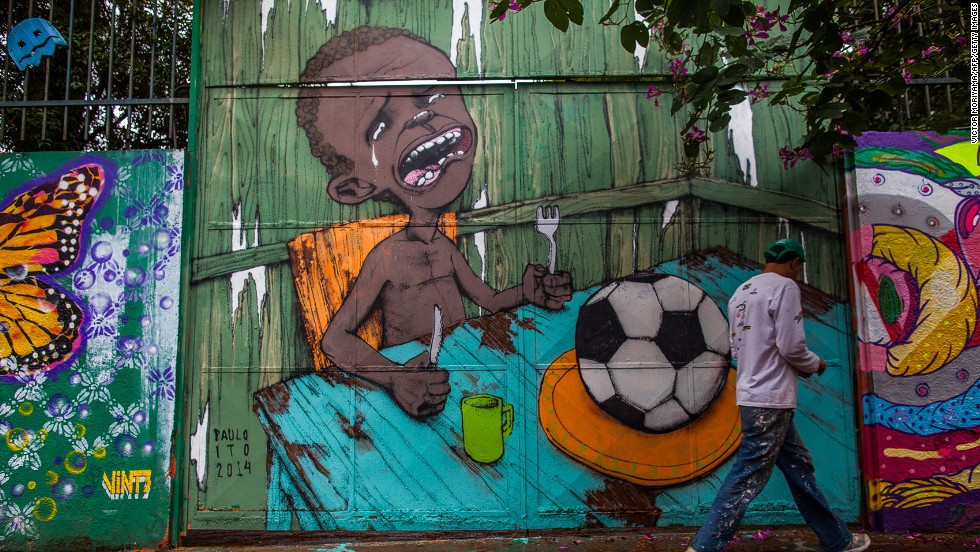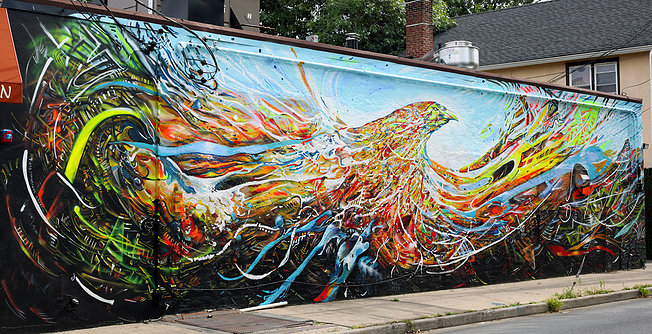Let’s Stomp the Street Art Stigmas
Art comes in a variety of different forms. But when it comes to street art, many have a hard time drawing the line between “art” or just plain vandalism. Beginning in the early ‘80s, street art emerged in New York City. As names like Banksy and Basquiat hit the art scene, many began following in their footsteps. However, street art has always been controversial as it is seen as a criminalistic act and perceived as social rebellion. The Anti Social Behaviour Act of 2003 defines graffiti as “painting, writing, soiling, marking or other defacing by whatever means” (The Guardian). Whether it be a quickly painted “tag” to a detailed mural, both are still deemed illegal and the artist risks being fined thousands of dollars or worse, imprisonment. Legal or not, graffiti is becoming accepted as a part of today’s urban culture while also being increasingly practiced by the youth.
Political Messages
Mostly self-taught, street artists aren’t just vandals who spray paint bubble letters for the fun of it. Street art is a lot more in depth with detailed and beautiful images, usually with social or political commentary behind them. For example, Lydia Emily’s “Say Something”, featured in Yay! LA Magazine, portrays a young girl writing the words: “it’s not my war”. As a child, Emily grew up with a mother heavily involved in civil rights protests and raised Emily to always speak up for what she believed in. With this, her art has struck cords within her town and she strives to continue sharing her political messages.
Create a Community
Brazil is one of the most accepting countries when it comes to street art. The role of graffiti in Brazil challenges the status quo and is a great example when it comes to street art as a tool of political communication and activism. Below is a picture of a work that highlights how the World Cup wastes money and leaves children starving with lack of food and nutrition.

Brazilians have the understanding that graffiti can be a career opportunity for youth in low-income neighborhoods. In Rio de Janeiro, many leading street artists have put graffiti to good use, founding art schools in poor neighborhoods and even partnering with the police to paint murals in run-down areas. They also have begun hosting large events and festivals, which bring in tourists and helps the economy drastically. Although there are laws prohibiting graffiti, the city has gained recognition throughout the world for its art. There is even a bill that assigns graffiti artists to designated spots in order to decrease undesirable markings in Buenos Aires, Brazil.
Murals Make a Difference

Even in Mamaroneck there is street art! Muralist, Piero Manrique, recently painted his mural called “Free”, located at 630 Mamaroneck Avenue. He states, “My hope is that this work will remind the people who see it of the common bonds shared by all cultures, and the power of our collective imagination”(Larchmont Patch). His abstract painted hawk not only brightens up the streets of Mamaroneck but gives our little town even more character than it had before. This further proves how street art and graffiti is taking over as a positive force, connecting all of us.
All in all, graffiti is no longer seen as a crime but a source for fascinating artwork that holds a deeper meaning. They not only bring awareness to social and political problems, they help build an artist’s identity and also give younger generations the inspiration needed to become more creative people. As the art world evolves, hopefully future generations will be given the rights to create art in public places without the risk of being fined or arrested…

